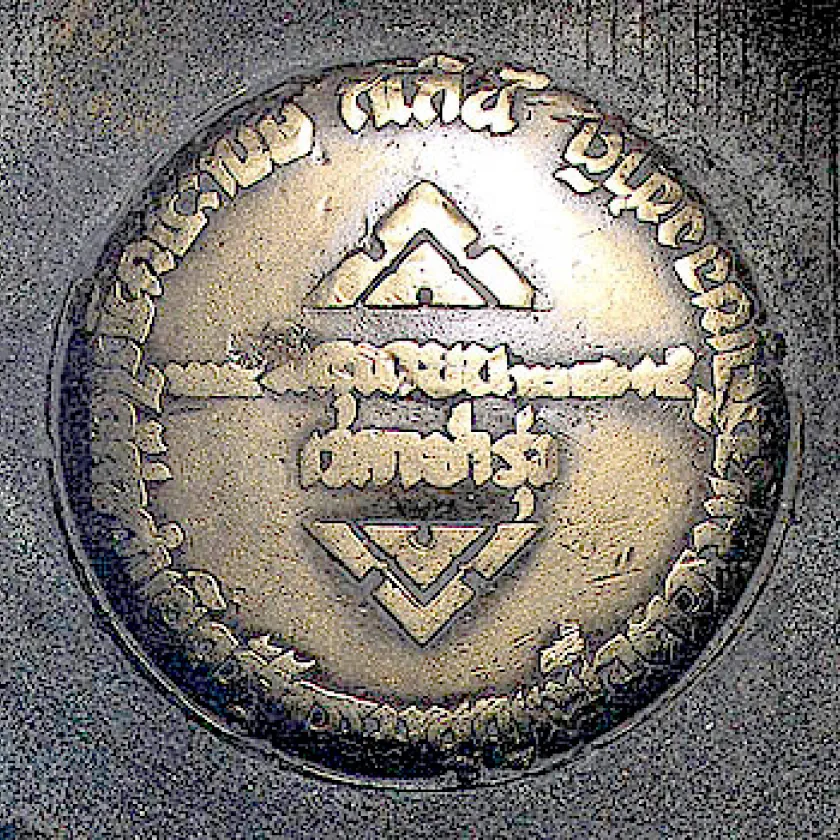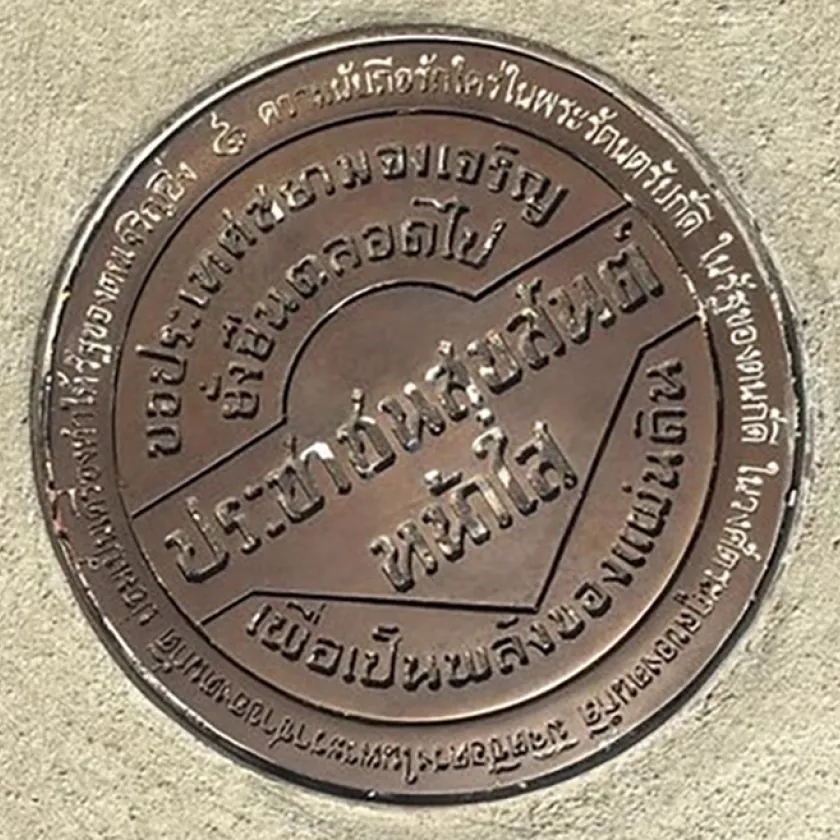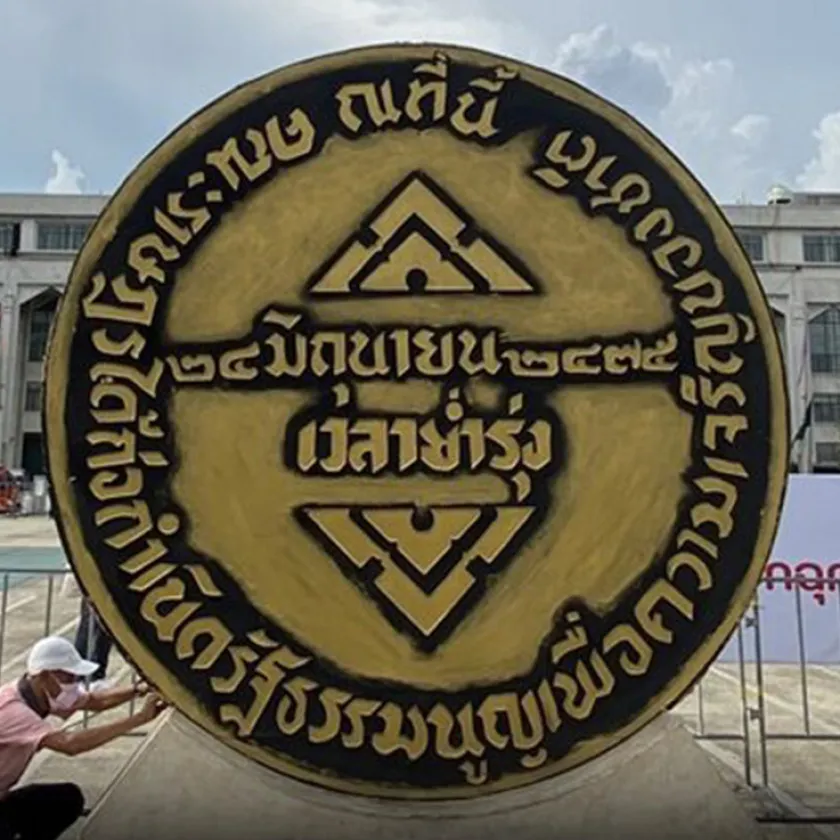The "People's Party Plaque," officially known as the "Constitutional Revolution Monument," is a commemorative object from the era of the People's Party, established to remember the Siamese Revolution of 1932. This monument is embedded in the center of Dusit Palace, precisely at the location where Phaya Phahon Phonphayuhasena, the leader of the People's Party, stood to read the People's Party announcement for changing the government on the dawn of June 24, 1932. The People's Party Plaque thus marks the end of absolute monarchy and the beginning of constitutional monarchy, as well as being associated with the memory of the People's Party's establishment of constitutional rule. Although the People's Party Plaque gradually faded from public memory after the end of the People's Party's power in 1947, its significance has been revived since the 1980s through historical and memory reconstruction related to the People's Party in Thai society. As a result, the monument has increasingly become important and has turned into a political space for ceremonies commemorating the Siamese Revolution every June 24th since the 1990s.
The origins of the People's Party Plaque trace back to early 1936, following the initiative of Luang Thamrongnavasawat, the Minister of the Interior in Phaya Phahon Phonphayuhasena’s government, who was also the chairman of the People's Party Club at that time. He intended to create a commemorative monument to memorialize the Siamese Revolution. Once this idea was approved by Phaya Phahon, the People's Party Club took on the responsibility of creating the monument, with Phra Phromphichit, an instructor at Silpakorn School, designing, sculpting, and casting the monument. The People's Party Plaque is a bronze circular marker with a diameter of approximately 10 inches. It bears the inscription: "At this place on June 24, 1932, at dawn, the People's Party established the Constitution for the prosperity of the nation." The center of the monument features a design resembling the cross-section of a flower petal. The monument was ceremoniously installed on December 10, 1936, at 2:30 PM at Dusit Palace. The ceremony was presided over by Phaya Phahon, the Prime Minister and leader of the People's Party, as the layperson chairman, and Phra Thammapikkhacharn (Pload) as the monastic chairman. Attendees included key figures from the revolution who had been involved in the political change.
The installation of the People's Party Plaque in 1936 took place within a political context where the People's Party was increasingly aware of the importance of managing public memory regarding the Siamese Revolution. This began with commemorations of the revolution and the adoption of the temporary constitution in June, followed by the commemoration of the protection of the constitutional regime through the unveiling of the Anti-Rebellion Monument in October, and finally emphasizing the start of the constitutional regime as a milestone for the prosperity of Siam through the installation of the People's Party Plaque in December. However, the discreet embedding of the monument in the pavement at Dusit Palace reflected the People's Party's political memory efforts. The Phaya Phahon government was still attempting to reconcile and avoid direct conflict with the old ruling class’s memories and the remnants of the absolute monarchy’s power. Additionally, this commemorative marker ended up being a less powerful political symbol compared to the more prevalent symbols of the constitution seen in emblems, monuments, and objects related to the new regime. Thus, when the government of Luang Phibunsongkhram constructed the Democracy Monument on Ratchadamnoen Avenue in 1939, this monument became a grander and more powerful symbol of the Siamese Revolution, replacing the People's Party Plaque.
After the coup of 1947, the People's Party Plaque faded from public memory, much like the end of the People's Party’s power. Furthermore, during the military dictatorship of Field Marshal Sarit Thanarat, the monument was removed from Dusit Palace. However, following Sarit's death, the monument was reinstalled at its original location. It wasn't until the 1980s, with the revival of the People's Party’s history in Thai society, that the monument began to receive more attention through its depiction in publications and exhibitions, as well as stories from various individuals' memories. Despite this renewed interest, the People's Party Plaque still lacked significant political power. Although there were small-scale commemorations of the Siamese Revolution on June 24 each year, these events were minimal and lacked political significance. However, after the 2006 coup, the revival of the People's Party in Thai society led to increased use of the monument’s area for activities related to the Siamese Revolution and combined with anti-coup sentiments. Notably, there was a major event marking the 80th anniversary of the Siamese Revolution on June 24, 2012. Following the 2014 coup, conservative forces once again attempted to erase the memory of the People's Party. Political activities at the monument site were prohibited, and the People's Party Plaque was dismantled and destroyed in April 2017, replaced with a new, enigmatic marker devoid of any historical connection to Thai democracy. Today, the area around Dusit Palace has been enclosed with a fence as a royal compound, and the original location of the People's Party Plaque is covered with flower arrangements surrounding a statue of King Rama V.
Photographs
Video Clips
Coordinates
หมุดคณะราษฎร เคยฝังอยู่บนพื้นถนน ใกล้กับพระบรมรูปทรงม้า รัชกาลที่ 5
ปัจจุบันถูกรื้อถอนออกไป และแทนที่ด้วยหมุดหน้าใสฯ



